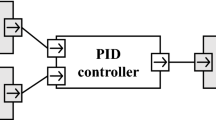Abstract
The CLEARSY Safety Platform (CSSP) is both a hardware and software platform aimed at developing safety critical applications. A smart combination of hardware features (double processor) and formal method (B method and code generators) was used to produce a SIL4-ready platform where safety principles are built-in. A first version, SK0, was released for education purpose with a restricted application template. An industry-strength version, CS0, was then released, providing more degrees of freedom at the cost of a more tricky development and engineering process. This article presents the new CS0 modelling paradigm, lists the conditions to be verified by the system developed, and briefly introduces a first application, software only: a safety flasher.
Access this chapter
Tax calculation will be finalised at checkout
Purchases are for personal use only
Similar content being viewed by others
Notes
- 1.
The software model is proved to be defect-free - complying with its formal specification and without programming errors. The code generators and the compilers are not defect-free. They are not required to be defect-free as the defects are detected with divergent behaviour during execution.
- 2.
- 3.
The safety case contains all the details leading to complete demonstration (SIL4) but is not disclosed here (the safety case is around 120 pages). The CSSP has already been certified 3 times.
- 4.
The top-level sequencer is hard-coded and cannot be modified.
- 5.
In B, a BASIC machine is a component with a formal specification (a B machine) but with a handwritten implementation. A BASIC machine allows to integrate third party software in a B project.
- 6.
I/O requirements are so diverse among the safety systems we have been involved into that we have decided to separate I/O from the safety computer.
- 7.
They are not detailed here, but may be found in the CSSP \(CS_0\) User Manual.
- 8.
The complete safety flasher model and code are going to be available on [3].
- 9.
The situation is different from the SK\(_0\) where these function calls were included once for all in the top-level sequencer, not modifiable by the developer.
- 10.
References
Abrial, J.: The B-Book - Assigning Programs to Meanings. Cambridge University Press, Cambridge (2005)
Abrial, J.: Modeling in Event-B - System and Software Engineering. Cambridge University Press, Cambridge (2010)
CLEARSY: the clearsy safety platform programming handbook (2020). https://github.com/CLEARSY/CSSP-Programming-Handbook. Accessed 29 May 2020
CLEARSY: Github clearsy (2020). https://github.com/CLEARSY/. Accessed 29 May 2020
Lecomte, T.: Double cœur et preuve formelle pour automatismes sil4. 8E-Modèles formels/preuves formelles-sûreté du logiciel (2016)
Lecomte, T.: The bourgeois gentleman, engineering and formal methods. In: Symposium, AFFORD 2019, Porto, Portugal, 7–11 October 2019. Proceedings (2019)
Lecomte, T., et al.: Low cost high integrity platform. In: Symposium, ERTS 2020, Toulouse, France, 29–31 January 2020. Proceedings (2020)
Wikipedia contributors: cyclic redundancy check – Wikipedia, the free encyclopedia (2020). https://en.wikipedia.org/wiki/Cyclic_redundancy_check
Wikipedia contributors: Intel hex – Wikipedia, the free encyclopedia (2020). https://en.wikipedia.org/wiki/Intel_HEX. Accessed 08 May 2020
Wikipedia contributors: programmable logic controller – Wikipedia, the free encyclopedia (2020). https://en.wikipedia.org/wiki/Programmable_logic_controller. Accessed 08 May 2020
Wikipedia contributors: safety integrity level – Wikipedia, the free encyclopedia (2020). https://en.wikipedia.org/wiki/Safety_integrity_level. Accessed 08 May 2020
Acknowledgements
The work and results described in this article were partly funded by:
– BPI-France (Banque Publique d’Investissement) and Métropole Aix-Marseille as part of the project LCHIP (Low Cost High Integrity Platform) selected for the call AAP-21.
– ADEME (Agence de l’Environnement et de la Maitrise de l’Energie) selected for the programme “Vehicle of the Future” of Investissements d’Avenir.
Author information
Authors and Affiliations
Corresponding author
Editor information
Editors and Affiliations
Rights and permissions
Copyright information
© 2020 Springer Nature Switzerland AG
About this paper
Cite this paper
Lecomte, T., Lavaud, B., Sabatier, D., Burdy, L. (2020). A Safety Flasher Developed with the CLEARSY Safety Platform. In: ter Beek, M.H., Ničković, D. (eds) Formal Methods for Industrial Critical Systems. FMICS 2020. Lecture Notes in Computer Science(), vol 12327. Springer, Cham. https://doi.org/10.1007/978-3-030-58298-2_9
Download citation
DOI: https://doi.org/10.1007/978-3-030-58298-2_9
Published:
Publisher Name: Springer, Cham
Print ISBN: 978-3-030-58297-5
Online ISBN: 978-3-030-58298-2
eBook Packages: Computer ScienceComputer Science (R0)




